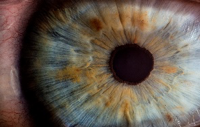The bacterial keratitis is a serious ocular infectious disease which can lead to considerable visual loss. The severity and outcome of corneal infection generally depend on the basic condition of the cornea and the virulence of the aetiological agent.
The micro-organisms most commonly associated with keratitis are coagulase-negative Staphylococci, Staphylococcus aureus, Pseudomonas aeruginosa e Streptococcus pneumoniae. The clinical presentation, microbiological characteristics and treatment outcomes of keratitis sustained by these micro-organisms are well characterised in the literature; in contrast, little is known about keratitis sustained by Moraxella spp., which, although rare, are still serious.
What are Moraxella keratitis?
Moraxella spp., whose reservoir is represented by the mucous membranes of the mouth, upper respiratory tract and genito-urinary tract of humans, it can also be isolated from the skin and eyes.
The corneal infection sustained by this bacterium is characterised by a paracentral or peripheral ulcergenerally oval in shape and localised, often painlessusually associated with hypopyon and occasionally with hyphema. The ulcer may extend into the stroma for days or weeks and perforating the cornea.
Le bacterial keratitis are rare in the absence of predisposing factors. In the past, keratitis sustained by Moraxella spp were associated with states of immunodepression determined by chronic alcohol use, malnutrition and diabetes.
However, more recent studies conducted in Australia, Japan and the United States have shown associations between Moraxella keratitis and use of worn contact lenses, trauma, advanced age, history of herpes keratitis and corneal transplantation.
A study recently published in American Journal of Ophthalmology, in order to further expand knowledge on Moraxella keratitis, analysed the risk factors, clinical characteristics, management and treatment outcomes of 39 cases of Moraxella keratitis treated between January 2003 and April 2018 at the University of Pittsburgh Medical Center.
The study showed that the majority of patients examined (79.5%) were over 50 years old at the time of diagnosis, this finding, in agreement with other previous research, suggests that advanced age may be an independent risk factor.
None of the patients enrolled in the study had a documented history of alcohol use suggesting, like other recent publications, that chronic alcohol use does not represent a prevalent risk factor, contrary to what was previously stated.
The research also showed that the associated systemic factor, most common among patients, was the diabetes mellitus (20.5%) followed by a history of autoimmune disease (10.3%). The association between bacterial keratitis and local host defences is well known, and Moraxella keratitis is no exception: the study showed that 87.2% of patients had a ocular risk factorthe most frequently encountered were blepharitis (30,8%), eye dryness (30.8%) and history of eye surgery (23.1%). The authors also revealed associations with contact lens wear (5.1%) and trauma (7.7%).
As for therapy analysis92.3% of the patients were treated with fluoroquinolones and 76.7% with fortified antibiotics10.3% of the patients required treatment of tarsorrhaphythe 15.4% penetrating keratoplasty and a patient theenucleation.
Despite the fact that in most cases Moraxella was sensitive to fluoroquinolones and aminoglycosides, many patients required surgery and in the end, visual acuity was often very impaired.
The study makes a contribution to the characterisation of Morexella keratitis by suggesting that a damaged ocular surfacedue to intrinsic diseases or eye surgery, is the main predisposing factor and that the management of theinfection could provide for various modes of intervention in order to prevent the persistent epithelial defect.
Sources
–Moraxella Keratitis: Analysis of risk factors, clinical characteristics, management and treatment outcomes. Asad F. Durrani et al. American Journal of Ophthalmology, 2018 S0002-9394(18)30517-8.
–Moraxella keratitis: Predisposing factors and clinical review of 95 cases. S Das et al. Br J Ophthalmol 2006; 90:1236-38.
Dr. Carmelo Chines
Direttore responsabile

